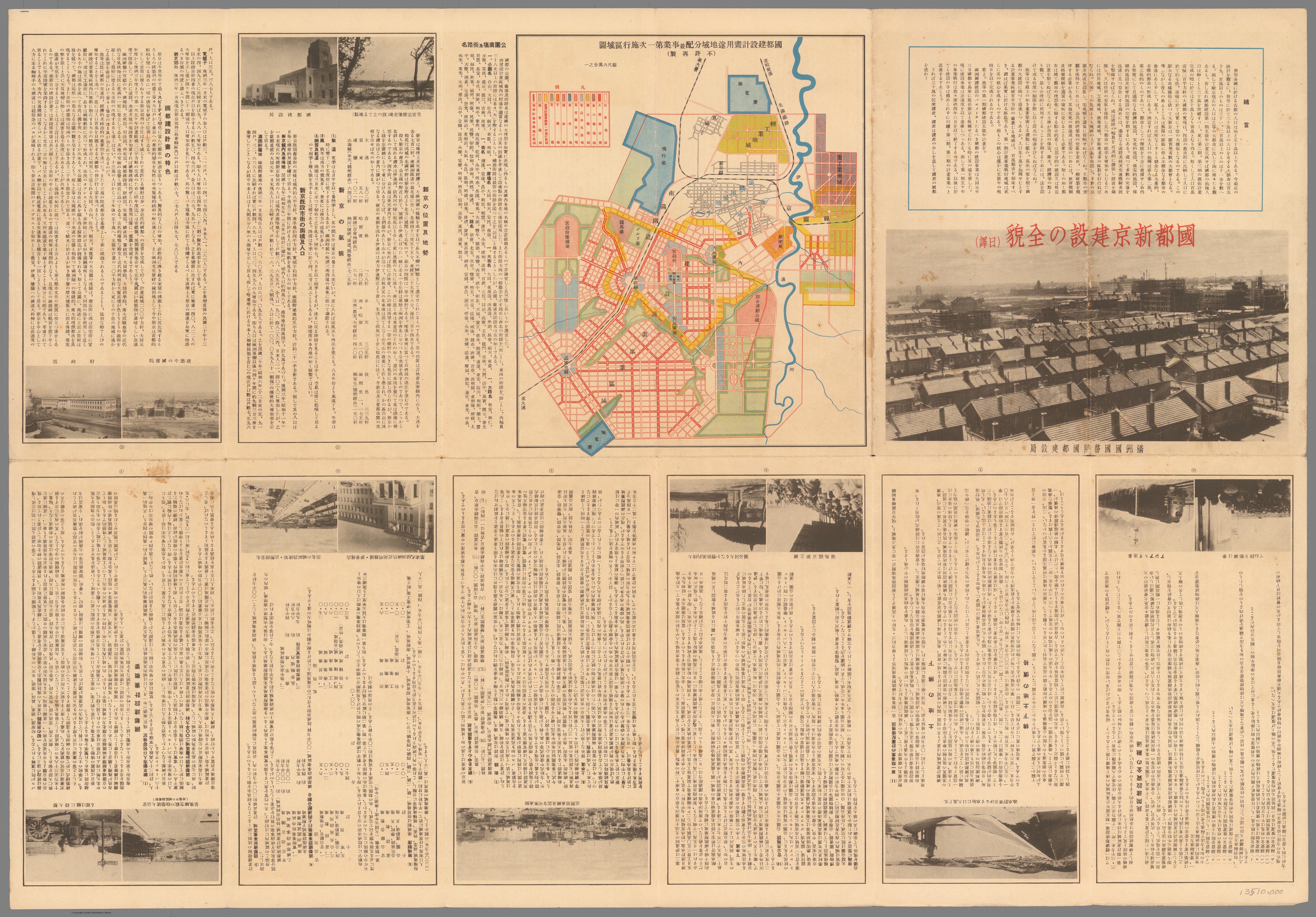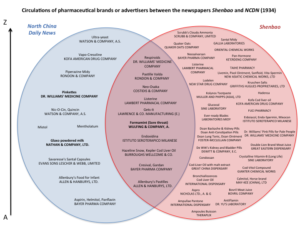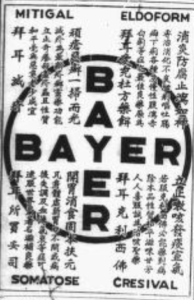When Zeng Guofan, the famous scholar and leader of the Hunan Army in the late Qing period, successfully took back Nanjing from the Taiping Heavenly Kingdom, one of the most prioritised tasks in his reconstruction plan was to build Confucian temples.1 Interestingly, Japanese colonialists’ naming of the newly constructed areas and its promotion of Confucian shrines and rituals of worshipping Confucius happened about sixty years later in Changchun coincidentally echoes with Zeng’s plan in Nanjing. In this blog, I will argue that Confucianism profoundly integrates with urban construction in Changchun, the capital city of Manchukuo, due to the reason that Confucianism is important to prove one’s legitimacy of ruling in China. It could consolidate the rule and is an essential alternative for the Japanese to construct a utopia in the urban spaces in Asia. Also, I want to address an exceptional characteristic possessed by Confucian temples, a form of unity in Lefebvre’s space of triad theory. The perceived, conceived space, perceived space and the space practised in a Confucian shrine reach a harmonious unification. This is one of the reasons why Confucian temples were preferred by a regime to build to consolidate its rule.

https://www.davidrumsey.com/luna/servlet/detail/RUMSEY~8~1~328360~90096829?qvq=q%3A%3D%22Manshu%CC%84koku%20Kokumuin%20Kokuto%20Kensetsukyoku%22%3Bsort%3APub_List_No_InitialSort%2CPub_Date%2CPub_List_No%2CSeries_No%3Blc%3ARUMSEY~8~1&mi=1&trs=2
In order to find the trace of Confucianism in Changchun, I found a map with a detailed construction plan of Changchun. It was published in 1936 in Xinjing, another name for Changchun. As shown in the map, the names of the locations in the city centre were excerpted from Confucian classics. For example, Anmin street got its name from “Shuntian anmin” which means following the will of Heaven and bringing peace to the people.2
Since Confucianism was the most fundamental ideology for the rulers of China, it forms the most fundamental part of China’s social and administrative systems. In pre-modern China, to enter the administrative system, one must learn the classical text of Confucianism and then takes the civil examination to become a government official. On the social aspect, Confucianism assigns everyone who lives in the society a role to fulfil, like Confucius’s famous saying, “There is government when the prince is prince, and the minister is minister; when the father is father, and the son is the son.” Confucianism is the foundation for the order of society and the nation.
In the early 1930s, establishing order and control in Changchun was one of the most critical tasks for Guandong Army and the Manchukuo government after the Manchurian incident, and therefore Confucianism came to the front stage of Changchun. By looking into the historical context, we could know that in 1932, Japan was urgent to prove its legitimacy in China. In the North China Herald, published on 7 September 1932, there was an article with the title “Expedition to Manchukuo?” that reported the claim made by the Chinese government in Nanjing to take back Manchuria and the gathering of Soviet troops near the border of Manchukuo.3
In this map, these names excerpted from Confucian classics are particularly marked out, but buildings and locations such as the Ministry of Culture and Education and State Council were left out. They were only written in the columns printed beside this map. Actually, these government institutions were either located around Datong square or along Shuntian streets. The map tended to explicitly emphasise these public facilities, which were named after Confucianist ideology. The integration of Confucianism in the urban construction of Changchun entrusted Manchukuo and the Manchukuo government’s wishes that Manchukuo could become a prosperous and harmonious modern state under the teaching of Confucianism without following the trajectory of the west. Ironically, the order in Manchukuo, specifically in Changchun, was still maintained by Guandong Army.4
The other significance of the map is that it missed marking the location of Confucian shrines in Changchun. The most prominent Confucian shrine in Changchun is located near The Entertainment Place (歡樂地) on the map. Though many landmarks were named after Confucian classics, the map still overlooked one of the most critical things in practising Confucianism. It confirms what Yishi Liu argues in his article that from 1937 Confucian worshipping gradually lost its status in Manchukuo, as the Ministry of Culture and Education, which was in charge of worshipping Confucius, was reduced to a bureau and merged into the Ministry of Civil affairs.5 The promoted ritual of worshipping became the worshipping of Amaterasu. However, back in 1932, the ritual of worshipping Confucian was advocated by the first Prime Minister of Manchukuo Zhen Xiaoxu and supported by Guangdong Army, the true authority in Manchukuo.6 There was a trend of deterioration of the popularity of Confucianism in Changchun in the late 1930s when the Japanese gradually started to gain a more stable position in Northern China.
Finally, I want to argue that Confucian shrines are a space where the perceived, the conceived, and the practices could reach harmony without creating any unpredicted situation or function. Confucian shrines are built for worshipping Confucius; besides the rituals hosted by government officials or even the emperor, sometimes normal people could also go to the shrine for the same purpose. With thousand years of teaching Confucianism, the meaning of space and its ideology behind space became monolithic. An example of the construction in Changchun which created huge differences between the practices of the space and the space conceived is the National Founding University (Kendai) in Changchun, which was built as a pan-Asianist institution to breed the leader of future generations who would lead the revival of East Asia. But this eventually resulted in disillusionment amongst the best educated and highly expected people toward the nation-founding ideals, and some even turned themselves against the Japanese.7 Many secret anti-Japan activities were active in Kendai, such as the forbidden-book reading association. Compared to Kendai, Confucian shrines were a very ‘stable’ space with less probability of cultivating dangerous thinking or activities against Japanese colonial authorities. Confucian shrines, for hundreds of years, only had one straightforward function: to worship Confucius. With their close connection with the ruling class, and under the supervision of Guangdong Army8, it could be seen as a unified space of perceived, conceived and practised as a tool for the consolidation of the regime.
- Wooldridge, Chuck. City of Virtues: Nanjing in an Age of Utopian Visions (2015) Ch 4 “Zeng Guofan’s Construction of a Ritual Center, 1864-72”, p. 118. [↩]
- Liu, Yishi. “Competing Visions of the Modern: Urban Transformation and Social Change of Changchun, 1932-1957.” Ph.D., University of California, Berkeley, 2011, p.103 [↩]
- “Expedition to Manchukuo,” The North-China Herald, September 7, 1932. [↩]
- Liu, Yishi. “Competing Visions of the Modern”, p. 62. [↩]
- Ibid, p.73. [↩]
- Ibid, p.69. [↩]
- Liu, Yishi. “Competing Visions of the Modern”, p.24-25. [↩]
- Ibid, p.69-70. [↩]


